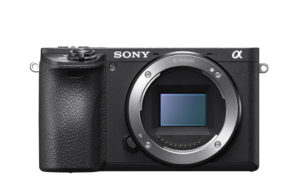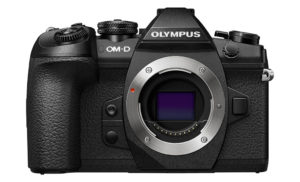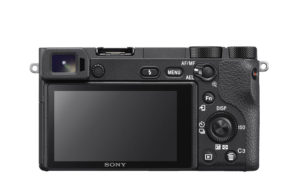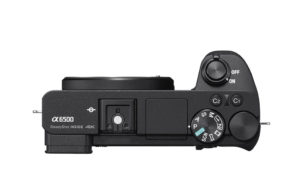The Sony a6500 and Olympus OM-D E-M1 II share more specifications than you might think despite the differences in their design and image format. They both feature an advanced hybrid autofocus system, can shoot 4K video, incorporate 5-axis sensor stabilisation and have a touch screen.
The two cameras represent the best each company has to offer right now for their respective systems (Sony mirrorless APS-C and Olympus Micro Four Thirds). However, even without writing up a full comparison, it is immediately obvious that the philosophies of the two companies are quite different. But first things first: let’s start with our comparison preview that lists the ten main differences between the two cameras!
Ethics statement: The information supplied in this article is based on official specifications, press releases and our personal experience with Sony and Olympus cameras. If we get the chance to test the two cameras side-by-side, we will publish a full comparison. We were not asked to write anything about these cameras, nor were we provided any compensation of any kind. Within the article, there are affiliate links. If you decided to buy something after clicking the link, we will receive a small commission. To know more about our ethics, you can visit our full disclosure page. Thank you!
1. Design, ergonomics and ease of use
The Sony a6500 maintains the same rangefinder styling as its siblings (the a6000, a6300 and former Nex series). Actually the difference in size between the camera and the lower-end model (a6300) is almost non-existent.
The a6500 is smaller (1.4cm less in width), shorter (2.4cm less in height) and thinner (1.5cm less) than the E-M1 mark II. The weight however is not so different, with the E-M1 II being only 45g heavier.
The Sony body is dust and moisture resistant while the E-M1 II is also freeze proof down to -14°C.
120.0mm x 66.9mm x 53.3mm
453g
134.1 x 90.9 x 68.9mm
498g
Two main differences that catch your eye from the beginning are the SLR design of the Olympus camera with the EVF inside the fake pentaprism at the centre and the more prominent grip.
Concerning the controls, the a6500 has an exposure compensation dial but only one exposure dial on top, which means you need to use the control wheel on the rear to change the shutter speed. There isn’t a dedicated focus joystick and the quickest way to change the autofocus is to press the centre button on the rear control wheel first, then use the wheel to move the AF point.
The camera has 10 custom buttons and an Fn button that displays a quick menu with 12 customisable entries. On the main top dial there are two Memory Recall modes where you can save your favourite settings.
The OM-D E-M1 II features two dials on top to control exposure and a lever on the rear that, depending on the position, can change the function of these two dials (for example, position 1 changes aperture and shutter speed, and position 2 changes ISO and WB).
The various Fn and programmable buttons (11 in total plus an extra L-Fn button on select lenses) are more widely distributed around the body and two of them can be found out front near the grip. The 4-way pad on the rear can be used to instantly change the AF point but as a result, you will lose four potential custom buttons. The camera has a super control panel (quick menu) accessible with the OK button but it can’t be customised. On the top mode dial, there are three Custom modes available.
2. EVF and LCD
The a6500’s EVF is positioned on the left side (rear view) and has a 0.39-inch OLED panel. The resolution is 2.36 million dots with an eyepoint of 23mm, 100% field coverage, magnification of 0.70x and maximum refresh rate of 120fps (100fps when the camera is set to PAL mode).
The E-M1 II’s electronic viewfinder is larger with a slightly better magnification of 0.74x but they share the same resolution of 2.36 million dots, 100% field coverage and the 120fps frame rate. The eyepoint is 21mm and the technology is LCD.
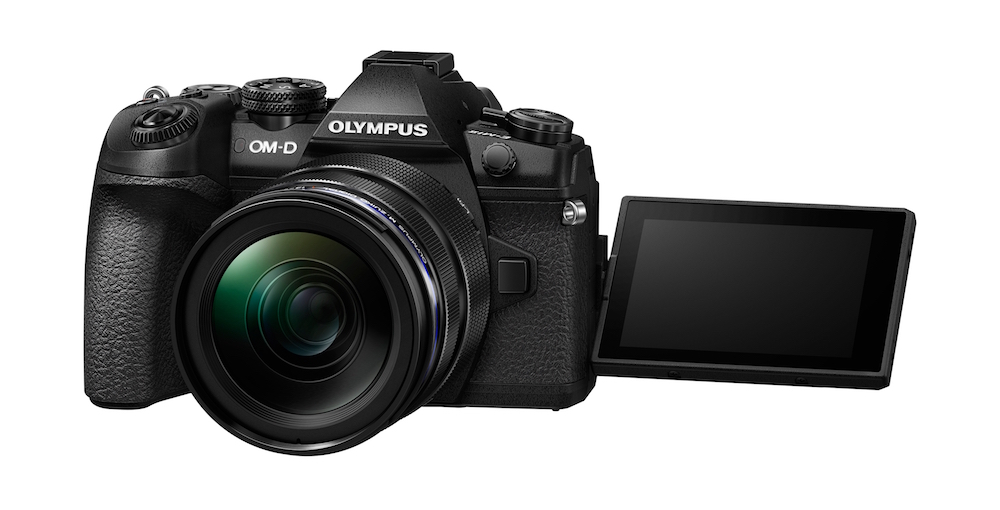
As for the rear monitor, both are touch sensitive but the one of the A6500 can only be tilted up and down (90° up, 45° down). The LCD monitor of the Olympus camera is a multi-angle type and can be flipped to the side. The latter has slightly more resolution as well (1037K dots vs 921K dots on the Sony camera). 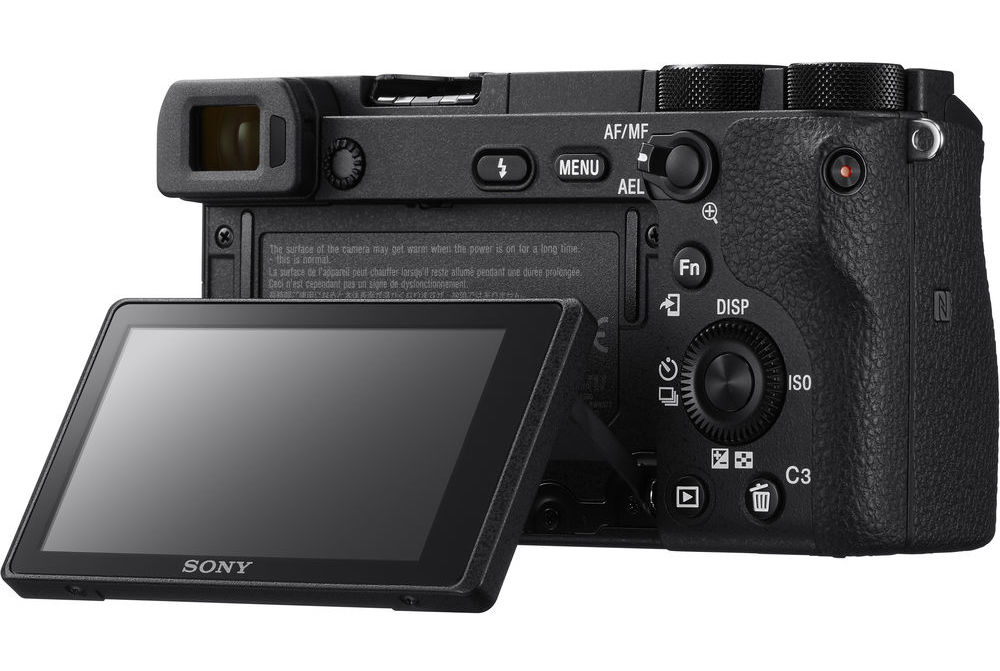
3. SD card slot
One small detail that many professional photographers care about is a dual SD card slot. Sadly the a6500 doesn’t have one and the memory card compartment is still found at the bottom next to the battery. I was surprised that Sony didn’t implement such an option now that many mirrorless brands are starting to include it on their flagship models.
The E-M1 II comes with a dual SD card slot and the first one is compatible with UHS-II cards.
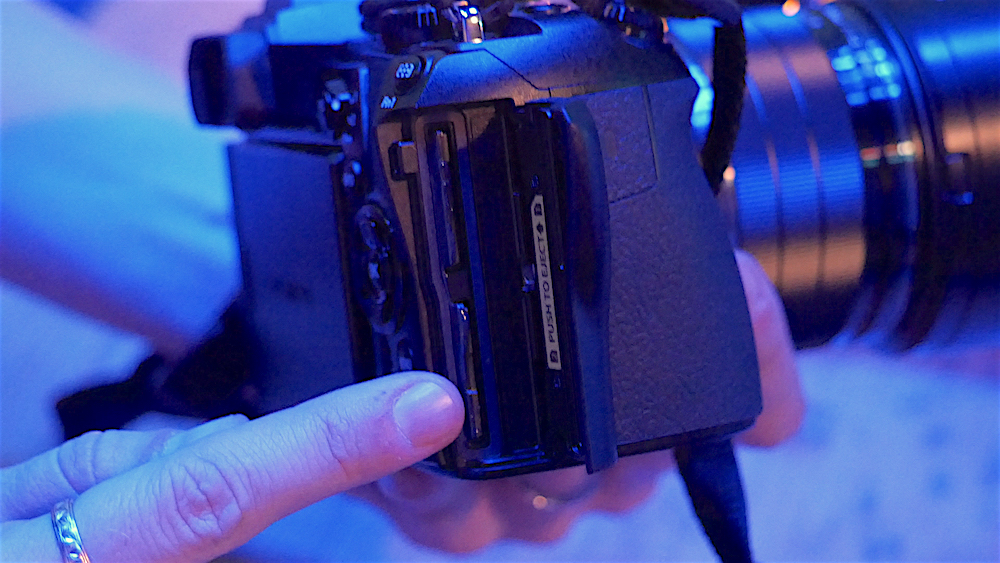
4. Sensor
Now that we have summarised all the most relevant differences concerning design and ease of use, let’s dig into the technology housed inside. Naturally, the first difference we encounter is the image sensor.
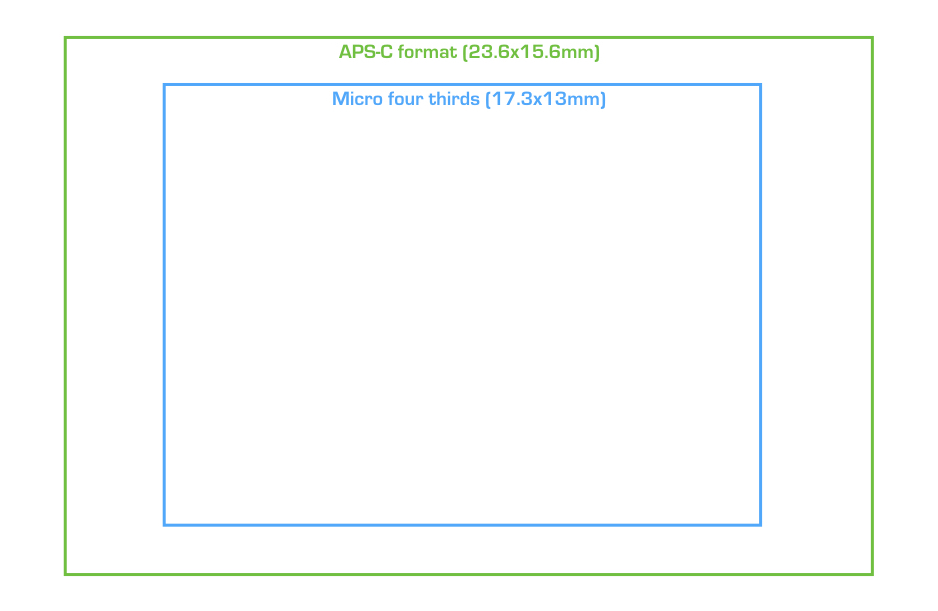
The Sony a6500 has a larger sensor – an APS-C 24MP CMOS type to be exact. A unique characteristic of the sensor is the thin copper wiring layer that allows for more light gathering and a front-end LSI chip that enhances the buffer capabilities. The ISO sensitivity ranges between 100 to 51200.
The E-M1 mark II Micro Four Thirds sensor is slightly smaller and has a resolution of 20MP. The ISO sensitivity goes from 200 to 25600 with an extended Pull option of 100. The image processor (TruePic VIII) is newly developed for the camera and features a double Quad Core engine that allows for larger buffer capabilities and faster sensor readout than its predecessor. This minimises rolling shutter when using the electronic shutter option.
5. Image stabilisation: sensor shift vs. Sync IS
Both cameras feature internal 5-axis stabilisation but according to the official specifications, the technology inside the E-M1 II is 1/2 Ev more efficient (5Ev versus 5.5Ev of compensation by CIPA standards).
A more important point concerns how the two cameras work with optically stabilised lenses. The a6500 uses three axes on the sensor and two on the lens.
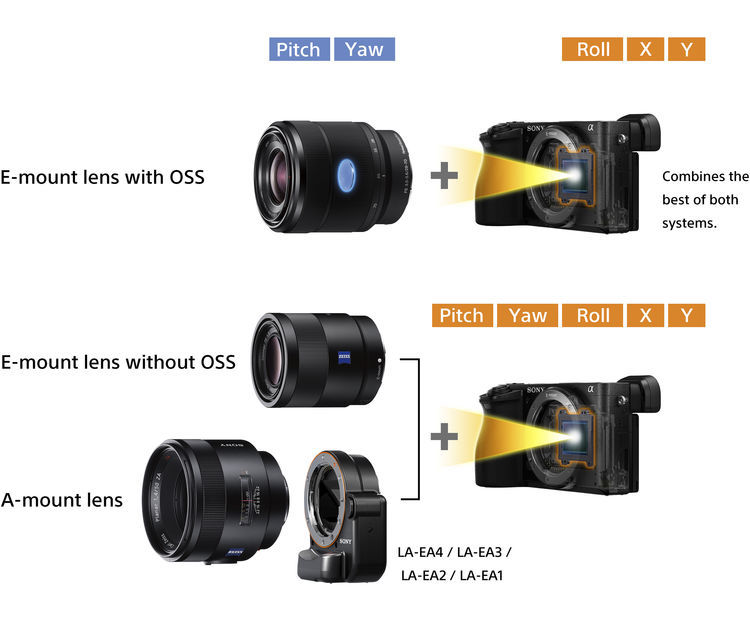
The Olympus camera uses 5 axes on the sensor with Panasonic OIS lenses (you can also give priority to the lens OIS in the menu). With the Olympus M-Zuiko lenses, the E-M1 II can combine sensor and optical stabilisation together (Sync IS) and raise the compensation effectiveness to 6.5Ev. Note that as of now, only two lenses are compatible with Sync IS (the 12-100mm f/4 Pro and 300mm f/4 Pro).
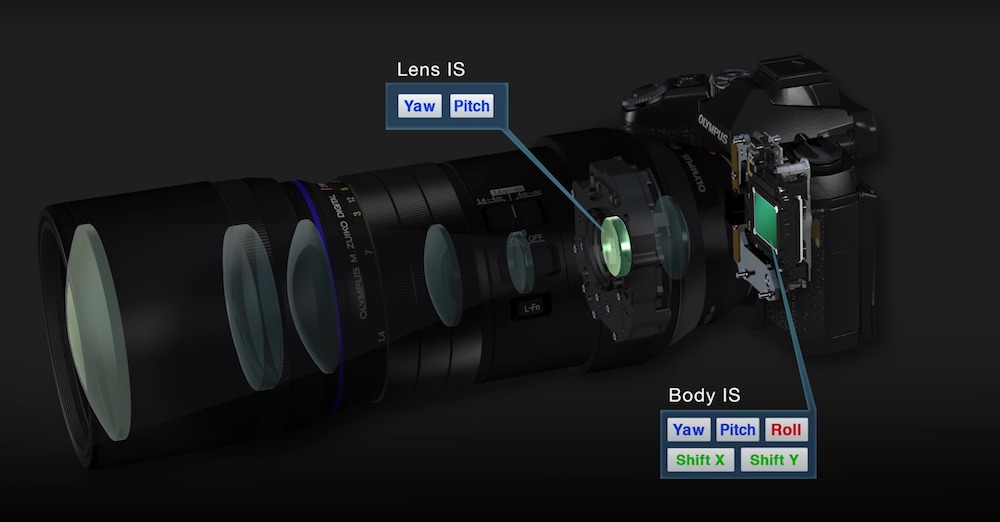
6. Autofocus points and settings
Both cameras features hybrid systems with phase and contrast detection capabilities but there are a few differences worth talking about here as well.
The a6500 uses Sony’s 4D Focus technology and includes 425 phase detection points that cover almost the entire surface of the sensor. The camera features High Density Tracking AF technology that concentrates the AF points around the moving subject that the camera detects automatically. Amongst other features worth mentioning we find 5 different focus areas (Wide, Zone, Centre, Flexible spot with 3 sizes and Expand Flexible Spot), Lock-On (3D Tracking) and EyeAF. The eye detection function is the best we’ve tested on a mirrorless camera.
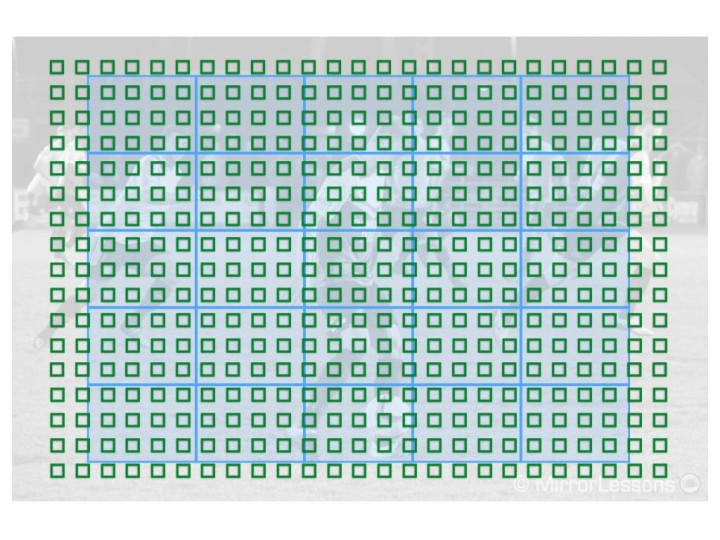
The E-M1 II has 121 cross-point type phase detection points that cover almost 80% of the sensor surface. The new AF algorithm can pick the appropriate focus points based on the subject. There are four areas (All, 9-group, 5-goup and single) and the camera includes advanced settings like C-AF Lock (makes the AF more or less reactive to sudden changes in the composition) and AF Limiter where you can set a minimum and maximum focus distance.
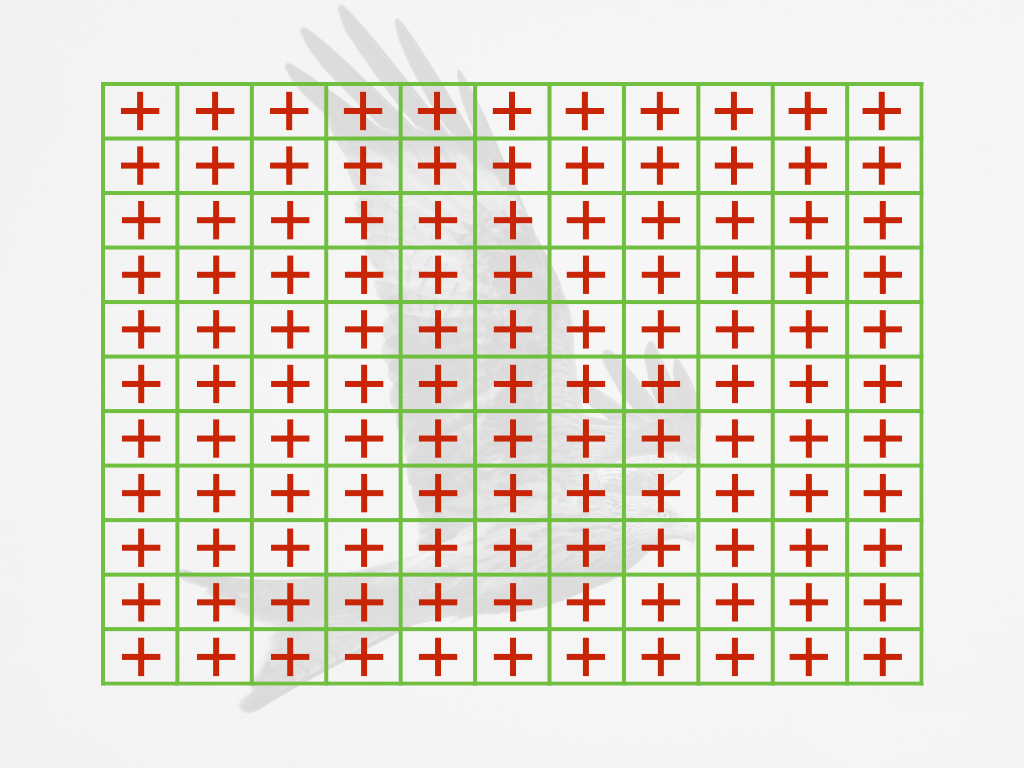
7. Continuous shooting and shutter options
The OM-D has an advantage in that the mechanical shutter speed that can go as fast as 1/8000s. On the Sony camera, you are limited to 1/4000s.
The a6500 can shoot up to 11fps in both Single and Continuous AF. There are four speeds available (11, 8, 6 and 3fps) and up to 8fps, the camera gives you continuous live view in the EVF. At 11fps, the live view is disabled and the last picture taken is displayed instead. There is an electronic shutter option that gives you silent shooting but nothing more.
The E-M1 II can do 15fps with the focus locked on the first frame and 10fps in continuous autofocus with live view. If you switch to the electronic shutter, the speed goes up to 60fps in Single AF and 18fps in Continuous AF (with both JPG and RAW files at full resolution). The new processor and faster sensor readout minimises rolling shutter with moving subjects so the 18fps mode is usable for sports and wildlife. The electronic shutter also allows for a 1/32000s shutter speed in addition to a silent mode.
The new LSI front-end chip on the a6500 sensor allows for a maximum buffer of 307 frames when shooting at 8fps in JPG Fine quality. The E-M1 II can record 117 JPGs at 15fps and unlimited frames at 10fps.
8. Video capabilities and options
Both cameras have 4K video capabilities and the main differences are found in the formats and various options.
The a6500 uses approximately 20MP on the sensor (6K equivalent) with full pixel readout (no pixel binning) and no sensor crop, then downscales the data to 4K, which allows for crisp and very detailed results. It uses the XAVC S codec with a maximum bitrate of 100mbps. In Full HD, the camera can go as fast as 120fps and has a Slow & Quick motion mode (1fps to 120fps in 8 steps) that records the files already conformed to 24, 25 or 30p. You can find picture profiles designed for video including the S-log2 and S-log3 gamma curves.
The E-M1 II can shoot 4K in Ultra HD format (3840 x 2160) up to 102mbps or Cinema 4K (4096 x 2160) up to 237mbps. The sensor is not cropped during 4K recording. There isn’t a true log profile and picture settings are more limited in comparison to the a6500.
Both cameras use their advanced AF systems for video as well and can output a clean signal in 4:2:2 8bit via the HDMI port. The E-M1 II has a mic input and headphone output while the a6500 only has a microphone input.
9. Extra features
An advantage the E-M1 II has over the Sony camera is the number of extra features and advanced functionalities provided in-camera.
The a6500 has a Panorama mode and exposure bracketing but most of the other features that might interest users such as Time-lapse must be purchased via the Playmemories app store.
The E-M1 II has loads of advanced features built-in. Some of the most interesting are:
- Timelapse / interval time shooting with 4K movie option
- Several Bracket modes including AE and Focus (with Focus stacking)
- High Res Shot up to 50MP (JPG) and 80MP (RAW) with reduced artefacts for moving elements (leaves, water, etc.)
- Live Composite for star trails and light painting
- Live Time for long exposures with live preview on the screen
Interestingly, one of the only features the a6500 has but the E-M1 II doesn’t is the built-in Panorama mode.
Concerning wireless connectivity, the a6500 offers NFC in addition to Wi-Fi and a QR code. The E-M1 II only has the last two.
10. Battery life
The E-M1 II can last 440 shots with a single charge. The battery is significantly larger than the previous model and the battery life is 40% more efficient than the original E-M1.
The a6500, on the other hand, uses the same batteries as all other APS-C and A7 bodies, which don’t last as long (approximately 350 shots by CIPA standards).
The Olympus camera has a dedicated battery grip that can house two extra batteries. Sony doesn’t produce a battery grip for the a6000 series. Hopefully one from a third party manufacturer like Meike will become available in the near future.
Conclusion
There are two things left to talk about. First we have the price: the E-M1 II is more expensive than the original E-M1 was when it was launched, costing around $2000. The a6500 is priced at $1400 but is more expensive in Europe (€1700 and £1500).
Another relevant point to consider is the lens catalogue. There are two main brands actively involved in Micro Four Thirds lens production (Olympus and Panasonic) and the choice available today is very wide. You can find professional zoom lenses, high quality primes, affordable zooms and primes, and pancake lenses.
The Sony APS-C E-mount system doesn’t share the same completeness mainly because Sony has been concentrating on full-frame lenses since the release of the A7 system. In one way, this is advantageous because you can use both APS-C and full-frame E-mount lenses but at the same time, many of them are too large for the APS-C series and more expensive. Within the APS-C line-up, there are many slow zooms and only a couple of constant f/4 zooms and 1.8 primes.
Both systems can benefit from additional third-party lenses like Samyang, Sigma, Voigtlander and others.
The Olympus camera is the most interesting for advanced and professional use because of the better ergonomics, dual SD card slot, complete weather proofing and an array of lenses that can satisfy every need.
The a6500 looks like a very powerful camera from Sony once again and it may have an advantage in terms of video quality, a territory where the brand no longer has anything to prove. However, I wish that Sony would listen to user feedback instead of just prioritising the technical aspects. The body is the same as the a6300 (and the a6000 before it) and there is certainly room for improvement concerning the ergonomics. Either way, we’ll reserve judgment until our complete comparison!
Check price of the Sony a6500 on
Amazon | Amazon UK | B&H Photo | eBay
Check price of the Olympus OM-D E-M1 II on
Amazon | Amazon UK | eBay | B&H Photo

